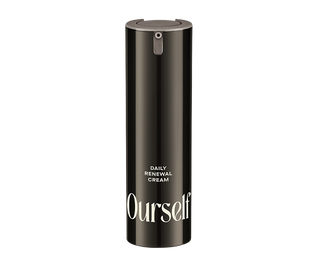
Your smile is a big part of how you express yourself. But here's a thought that'll wipe that smirk off your face: after age 35 or so, lips naturally tip into vanishing mode.
Of course, it doesn't affect everyone the same way; thanks, Nature. But maybe you've noticed how your lips look a little thinner, less voluptuous. Maybe your lipstick has less impact on your look than it used to. Fine lines around the mouth have started to creep in, as lips continue to lose volume, like a once-plump balloon with a slow leak. Sorry to say, your mirror is telling the truth. Science has officially measured lip loss over time, and it can be significant.
Before we get to the good news—and there IS VERY good news—let's take a look at what's happening. Big surprise: it's collagen. Well, that and hyaluronic acid (HA), one of the body's superstar molecules that's key for plumpness and hydration. Over time, the body simply starts to slow down, producing less collagen and less HA. (Side note: existing collagen also becomes less resilient and flexible. Gotta love aging.) Translation? The internal structure of your lips, the collagen, starts losing its integrity at the same time the HA "stuffing" starts to deflate. The inescapable result: Reduction in volume. Loss of firmness and elasticity. Those vanishing lips. End of science lesson!
So if nature isn't going to help out here, what's a person to do? Turns out, humans have been reshaping their lips for a LONG time. The earliest evidence for lip modification dates back 10,000 years, and folks have been rocking their pierced lips, labrets (think: short stick), and lip plates (less common nowadays) ever since. Some early groups are thought to have leveraged their enhanced lips as a sign of power and prestige.
Fast forward to the 19th century when doctors started experimenting with lip injectables for serious medical reconstruction. Spoiler alert: early beauty mavens hopped on that train, and fast! By the 1910s, people started trying to achieve fuller lips for purely aesthetic reasons, turning to all manner of injectables, from animal fats (okayyy...) to hot melted paraffin (yikes) to cow collagen (yuck). None of these substances ever truly made the grade, but in the 1990s injections with human collagen were introduced, followed by hyaluronic acid after 2003—and lip augmentation has never looked back (especially after Kylie Jenner's 2015 confirmation that her perfect 17-year-old pout was NOT all natural).
Fuller Lips Through Injections
So what's the lay of the lip land today? Mouth area treatments, including Botox, HA, and other dermal fillers, are always at the top of popularity charts for doctor's office procedures. And that's no surprise: injectables have their risks, but they deliver big results.
Faced with their shrinking lips, customers flock to make an appointment for that quick fix. A doctor injects the filler directly into pre-numbed lips, carefully monitoring the amount used and the proportion and symmetry being created. The results typically look fairly natural (horror stories aside), especially when delivered with a light touch. Mild side effects like short-term bruising and swelling are expected but don't normally last longer than a few days. The plumping lasts anywhere from 4-12 months, depending on a number of factors, and when it's time for a "re-fill," the procedure is repeated.
Fuller Lips At Home
Cosmetic companies have hopped on the bandwagon, too, introducing topically applied plumping and "filling" products with major claims and meh results. Truth be told, the science hadn't caught up with the marketing. Old-school plumpers used pricking ingredients to literally irritate lips into swelling up for a brief, if over-stimulating, effect.
More recently, formulas tout their hyaluronic acid (HA) content, trying to capitalize on this popular injectable. But here's the real deal: HA is a large molecule made up of smaller blocks that link into a long chain. And when it comes to plumping power, the longer the chain, the better.
Many skincare products (including lip "volumizers") include HA as an ingredient, but those long molecules are physically too big to be effective. Ourself Lip Filler leverages multiphasic vesicle technology to produce clinically-proven results.
Intrigued? Click here to learn more about Ourself Lip Filler.
Fuller Lips at Any Age
Loss of lip volume is inevitable. But whether you weather the trips to the clinic to face the needle a couple times a year, or you take control with the latest at-home DIY filling technology, you’ve got options. And hey, that's something to smile about, right?

